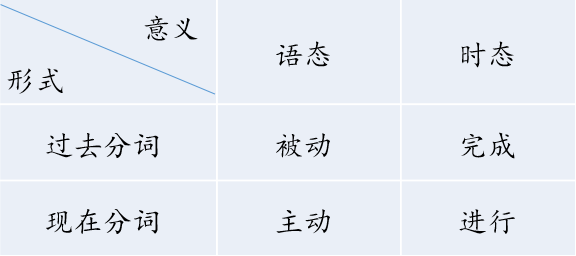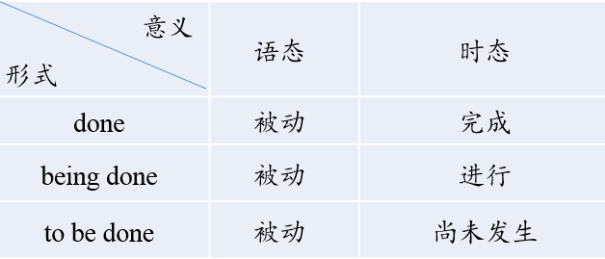Unit 4 HISTORY AND TRADITIONS
Reading and Thinking
【教学目标】
1. 理解并熟练掌握本课的重要词汇与句式;
2. 使学生能够了解并掌握过去分词作定语和宾语补足语的用法,并在真实语境中运用。
【教学重难点】
1. 理解并熟练掌握本课的重要词汇与句式;
2. 使学生能够了解并掌握过去分词作定语和宾语补足语的用法,并在真实语境中运用。
【教学过程】
Step 1 Lead in
Review the main idea of WHAT’S IN A NAME? by asking some students to retell the text.
Step 2 知识梳理
一、过去分词作定语的意义
1. 及物动词的过去分词作定语,在语态上表示被动;在时间上,常表示动作已经发生或完成,有时也不表示时间性。
Our teacher watched us doing the experiment and gave us a satisfied smile at last.
我们的老师看着我们做实验,最后给了我们一个满意的微笑。
The plan put forward at the meeting will be carried out soon.
会上提出的计划将很快被执行。
2. 不及物动词的过去分词作定语,它不表示被动意义,只强调动作完成。
Many little kids like gathering fallen leaves in the yard.
许多小孩子喜欢在庭院里收集落叶。
The risen sun is shining brightly in the morning.
早上已升起的太阳正明亮地闪耀着。
(2019•北京卷)Earth Day, ____________(mark) on 22 April, is an annual event aiming to raise public awareness about environmental protection.
解析:句意:地球日在4月22日举行,是一项旨在提高公众环保意识的年度事件。mark在这里是“庆祝,纪念(重要事件)”之意,是及物动词,Earth Day与之是被动关系,此处的字面意思是“地球日在4月22日被庆祝”,故用过去分词短语作定语。
二、过去分词作定语的位置
1. 前置定语
一般情况下,单个过去分词作前置定语,即放在所修饰词之前。
The polluted water was to blame for the spread of cholera.
被污染的水造成了霍乱的传播。
We needed much more qualified workers.
我们需要更多的合格的工人。
2. 后置定语
过去分词短语作定语时往往作后置定语,即放在所修饰词之后,它的作用相当于一个定语从句。
He is a teacher loved by his students.
他是一位受学生爱戴的老师。
The book published ten years ago is still a best­seller today.
十年前出版的这本书现在仍然是一本畅销书。
3. 过去分词与现在分词作定语的区别

例如:
As we all know, China is a developing country.
众所周知,中国是一个发展中国家。
The visitor is from a developed country.
这位游客来自一个发达国家。
4. 过去分词(done)、现在分词的被动语态(being done)
与动词不定式的被动语态(to be done)作定语的区别

例如:
The building built last year is our classroom building.
去年建造的那栋楼是我们的教学楼。
The building being built now is our classroom building.
现在正在建造的那栋楼是我们的教学楼。
The building to be built next month is our classroom building.
下个月将要建造的那栋楼是我们的教学楼。
三、常见的过去分词作宾语补足语的情况
1. 过去分词用在表状态的动词keep, leave等词的后面作宾语补足语。
He passed away, leaving his works unfinished.
他去世了,留下他的著作还未完成。
2. 过去分词用在使役动词have/get和make的后面作宾语补足语。
(1)“have/get+宾语+过去分词”表示“让别人做某事”。
He wants to have/get his eyes examined tomorrow.
他明天想去检查眼睛。
Jenny hopes that Mr. Smith will suggest a good way to have her written English improved in a short period.
珍妮希望史密斯先生会建议一个好的方法以使她的英语写作在短期内得到提升。
(2)在“make+宾语+过去分词”这种结构中,过去分词表示结果。
They managed to make themselves understood by using very simple English.
他们用很浅易的英语来设法使自己被理解。
3. 感官动词see, hear, notice, observe, watch, feel, find等后,可用过去分词作宾语补足语。
When we saw the road blocked with snow, we decided to spend the holiday at home.
当我们看到道路被雪封住后,我们决定在家过假期。
4. 表示“意愿;命令”的动词,如like, want, wish, expect, order等可用过去分词作宾语补足语。
The manager ordered the work finished at the end of this week.
经理要求在本周末完成这项工作。
5. 过去分词用在“with+宾语+宾补”这一结构中,过去分词与宾语之间是动宾关系。
With every problem settled, he began to think of a journey.
每一个问题解决后,他开始考虑旅行。
Step 3 知识答疑
1. 核查同学们的自学情况,收集问题逐步答疑。
2. 根据课前自学内容,对过去分词作定语和宾补的相关知识进行更详细的补充说明。
3. 让学生把从课文中找到带有过去分词的句子写出来,并分析过去分词在句子中充
当什么成分。
Step 4 小试牛刀
用括号内单词的适当形式填空。
1. In art criticism, you must assume the artist has a secret message ______ (hide) within the work.
2. Michael put up a picture of Yao Ming beside the bed to keep himself ______ (remind) of his own dreams.
3. Claire had her luggage ______ (check) an hour before her plane left.
4. I was surprised to find my hometown _______ (change) so much.
5. Those woods gave us all a sense of _______ (belong).
6. It could be a bit problematic, _______ (legal) speaking.
Step 5 Homework
课后练习

